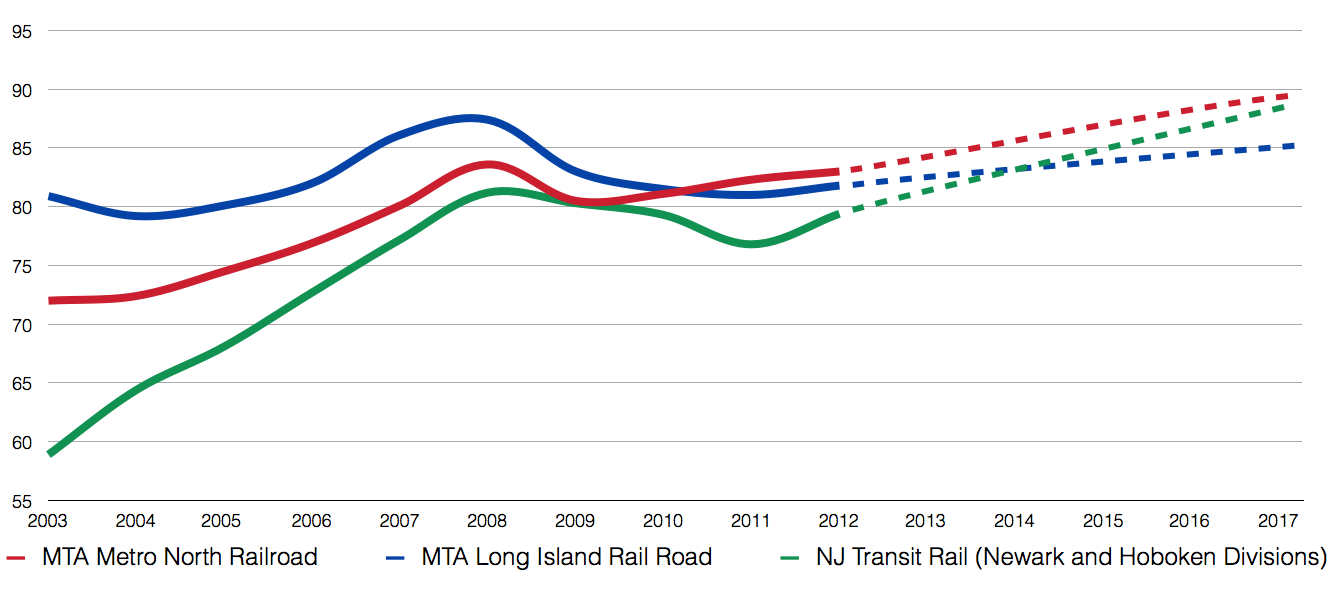Table of Contents
Download Planning for a New Northeast Corridor:

Download The Hudson Terminal Plan:

Download the Trends & Opportunities Report:

Changes in Regional Rail Ridership
Even though residents, commuters, and visitors to the metropolitan region have increasingly chose to use rail to travel from point A to point B, ridership growth among the region’s three regional rail systems has not been uniform. Since 2003, all three regional rail systems enjoyed sustained growth of several million annual passengers year over year until reaching a ridership peak in 2008. For MTA LIRR, MTA Metro-North, and NJ Transit (Newark and Hoboken divisions), those peaks were, respectively, 87.4 million, 83.6 million, and 81.2 million annual riders. Following the recession of 2008 and 2009, ridership declined throughout the three regional rail systems. However, MTA Metro-North and NJ Transit were able to rebound more successfully than MTA LIRR. Specifically, in 2011, MTA Metro-North passed MTA LIRR to become the most used regional rail network in the metropolitan region. Using forecasting models based on predicted future growth, NJ Transit is likely to also pass MTA LIRR’s annual ridership by 2015.
Annual Commuter Rail Ridership (millions of passengers)
In terms of overall growth, NJ Transit has added both the greatest number of new annual riders since 2003 at 17.8 million and has enjoyed the steepest net percentage increase over the past ten years at a growth rate of 28.9%. MTA Metro-North has added 9.8 million annual passengers since 2003 at a ten-year growth rate of 13.4%. MTA LIRR, however, has lost over 2.1 million annual passengers from 2003 to 2012, resulting in a ten-year net loss of 2.5%. Along with the steep decline in Long Island bus ridership, Long Island counties have seen their use of the region’s transit networks decline significantly over the past ten years in comparison to other areas within the metropolitan region. Specifically, there has been dramatic growth in the use of transit systems within northern New Jersey and this trend will likely lead to NJ Transit overtaking MTA LIRR as the second most-used commuter rail system within the metropolitan region.

